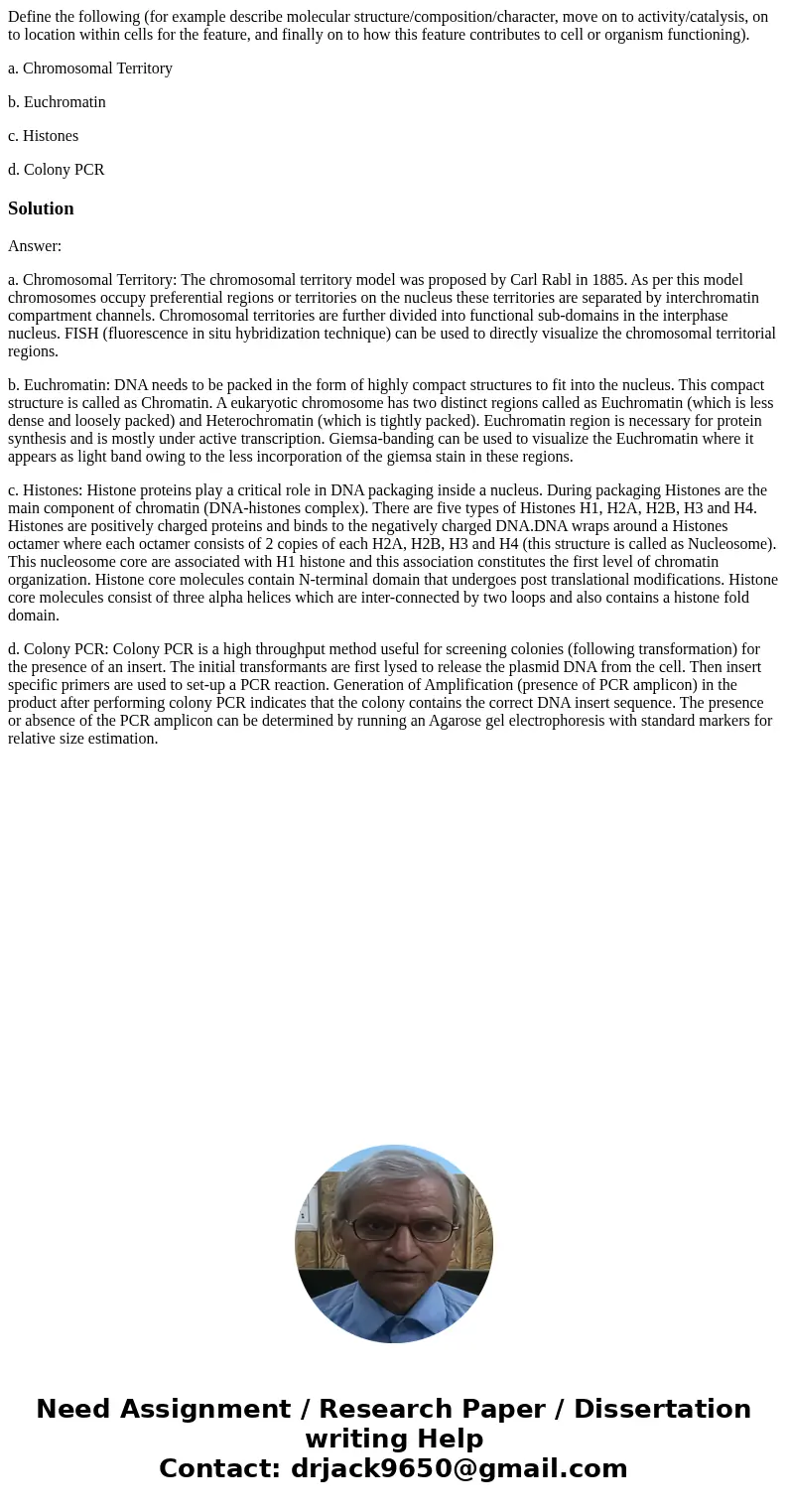Define the following for example describe molecular structur
Define the following (for example describe molecular structure/composition/character, move on to activity/catalysis, on to location within cells for the feature, and finally on to how this feature contributes to cell or organism functioning).
a. Chromosomal Territory
b. Euchromatin
c. Histones
d. Colony PCR
Solution
Answer:
a. Chromosomal Territory: The chromosomal territory model was proposed by Carl Rabl in 1885. As per this model chromosomes occupy preferential regions or territories on the nucleus these territories are separated by interchromatin compartment channels. Chromosomal territories are further divided into functional sub-domains in the interphase nucleus. FISH (fluorescence in situ hybridization technique) can be used to directly visualize the chromosomal territorial regions.
b. Euchromatin: DNA needs to be packed in the form of highly compact structures to fit into the nucleus. This compact structure is called as Chromatin. A eukaryotic chromosome has two distinct regions called as Euchromatin (which is less dense and loosely packed) and Heterochromatin (which is tightly packed). Euchromatin region is necessary for protein synthesis and is mostly under active transcription. Giemsa-banding can be used to visualize the Euchromatin where it appears as light band owing to the less incorporation of the giemsa stain in these regions.
c. Histones: Histone proteins play a critical role in DNA packaging inside a nucleus. During packaging Histones are the main component of chromatin (DNA-histones complex). There are five types of Histones H1, H2A, H2B, H3 and H4. Histones are positively charged proteins and binds to the negatively charged DNA.DNA wraps around a Histones octamer where each octamer consists of 2 copies of each H2A, H2B, H3 and H4 (this structure is called as Nucleosome). This nucleosome core are associated with H1 histone and this association constitutes the first level of chromatin organization. Histone core molecules contain N-terminal domain that undergoes post translational modifications. Histone core molecules consist of three alpha helices which are inter-connected by two loops and also contains a histone fold domain.
d. Colony PCR: Colony PCR is a high throughput method useful for screening colonies (following transformation) for the presence of an insert. The initial transformants are first lysed to release the plasmid DNA from the cell. Then insert specific primers are used to set-up a PCR reaction. Generation of Amplification (presence of PCR amplicon) in the product after performing colony PCR indicates that the colony contains the correct DNA insert sequence. The presence or absence of the PCR amplicon can be determined by running an Agarose gel electrophoresis with standard markers for relative size estimation.

 Homework Sourse
Homework Sourse